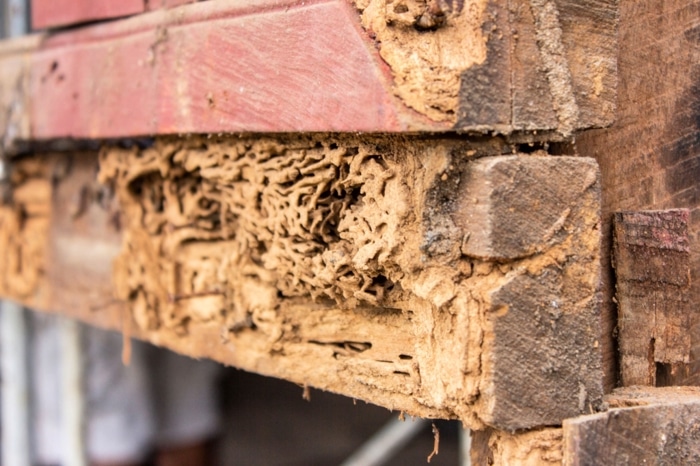When a resident reports bed bugs, respond swiftly and confidently. These pests spread fast, and hesitation costs time and money.
Here’s a smart, practical guide from a property management pro, designed to protect your apartments and residents without sounding like a stiff corporate memo.
Responding Immediately and Professionally
When the call comes in, act like you’re already ahead of it. Thank the resident for letting you know right away and walk through how to inspect. Tell them you’ll pop into their unit promptly—same day, if possible. This sets a tone: we take this seriously, and we’re on it.
Arrive with a clear plan. Follow a checklist for the unit—check mattress seams, bed frames, upholstered furniture, baseboards, electrical outlets, and even behind baseboard trim. Use a flashlight and magnifier if needed. Being thorough shows authority and attention to detail.
Communicating Clearly with Residents
Speak plainly and calmly. Explain what you’re looking for: small reddish-brown insects, tiny eggs, dark molting skins, or rusty spots of bed bug waste. Offer reassurance: you’re here to fix the issue, not blame them. Clarity prevents panic.
Let them know each step you’re taking, from inspection to treatment plans. Transparency builds trust—and avoids confusion, gossip, or fear once neighbors start whispering.
Isolate the Problem Unit
Once bed bugs are found, treat the entire unit as a priority zone. Seal any cracks in walls or around baseboards. Ask neighbors on both sides to give you access for a quick check. These pests move; finding them early in adjacent units stops spread.
Provide laundry instructions. Residents should wash all bedding, curtains, and clothing in hot water and dry on high heat. Offer clean sealable bags or take care of laundry in-house if your property has shared laundry facilities. This shows you’re managing things responsibly and professionally.
Choosing the Right Treatment Plan
Decide between chemical treatment, heat treatment, or a combination. Each has pros and cons. Heat treatment kills at all life stages in several hours, but risks warping sensitive materials or damaging electronics. Chemical sprays may leave residues and require multiple visits.
Consult your pest control partner (like the trained crews at Pest Share). Discuss what’s best for your building. Plan treatment dates and let residents know what to expect—smell, safety precautions, and any temporary relocation needs. Put it in writing, with clear timing and steps.
Preparing the Unit for Treatment
Help residents understand how to prep their spaces. They should clear floor clutter, bag toys and clothes, and move furniture away from walls to let technicians access every corner. Walk through the unit with them to confirm everything’s ready.
Explain why prep matters. A messy space lets bed bugs hide. If residents don’t prep, treatment won’t reach some areas. That sets the stage for repeat visits—which nobody wants. Be clear but cooperative, offering help when needed.
During Treatment: Communication and Coordination
Let residents leave during treatment days for safety and privacy. Offer checklists so they know what tasks the crew completes, like sealing cracks or applying dusts around bed legs.
Coordinate timing so residents don’t have to wait around. Provide contact info for both your office and the pest control crew, so they can ask questions easily. A little communication stress relief goes a long way.
Aftercare: Making Sure the Treatment Worked
About a week after treatment, revisit the unit and nearby apartments. Inspect for new signs and place interceptors under bed legs. These small devices trap bed bugs trying to climb up. Checking them regularly helps spot survivors early.
Inform residents how they can help. Encourage them to continue laundering bedding weekly and keep personal items stored off the floor—and document all actions. They’re part of the fight.
Handling Repeat Infestations
If signs linger beyond a month, consider a second treatment. Rotate methods—if you used chemicals first, try a heat follow-up. Confirm thorough prep and compliance from residents; sometimes remaining bugs survive because areas were blocked or hidden.
Timing matters, too. Mid-day heat treatments might not reach night hiding places on the first go. Let your pest control expert recalibrate if needed, then keep neighbors informed so they’re not surprised by another crew visit.
Preventing Spread Throughout the Property
Bed bugs spread quickly—so act like an infection control specialist. Schedule inspections in units above, below, and beside the affected one. Use monitoring devices near baseboards and furniture in common areas like hallways.
Also encourage residents to inspect their belongings when they move or return from travel. In shared laundry rooms, remind them to use dryer heat on clothes from outside. Small habits can reduce risk significantly.
Documenting Every Step
Keep a detailed log: dates and times of resident reports, inspections, treatments done, type of products used, and who handled each step. Note resident compliance and any additional concerns raised. Having an audit trail isn’t just good policy—it can prevent disputes, claims, or lease issues later.
This log becomes a reference for future incidents and shows you acted professionally if someone complains or insurance gets involved.
Training Your Team and Building a Response Culture
Ensure your maintenance and management teams have had bed bug response training. Teach them to recognize signs, inspect methodically, and communicate calmly. Make sure they understand prep expectations and treatment logistics.
Run drills occasionally—practice inspections or mock-report responses. Being prepared reduces mistakes, covers everyone’s face, and lets residents know you’re on top of things. You build credibility, and that goes a long way.
Budgeting for Bed Bug Resistance
Infestations can happen to anyone. So budget for them as part of ongoing maintenance. Set aside funds annually—25 cents per unit is a good start—to cover multiple treatments or emergency heat treatments if chemicals fail.
Letting budget shortages delay treatment can double control costs. Being proactive saves money—and stress—down the road.
Establishing Clear Bed Bug Policies in Leases
Ensure your lease language says bed bug treatment is allowed—even required—and outlines resident responsibilities for prep and cooperation. Clarify how costs are handled, and what happens if prep isn’t done or treatment is delayed because of resident inaction.
When policies are clear and signed, you give your team authority. Residents may grumble, but they can’t argue your right to remedy the problem—and that helps problems get resolved sooner.
Engaging Residents Post-Treatment
After treatment, send a friendly note: “We checked your unit on June 15 and didn’t find new signs. Please keep on washing bedding weekly and let us know immediately if you spot anything.” This keeps lines open and shows you’re still involved.
If nothing comes up for two months, consider giving a “no signs detected” clearance letter to residents. They can use it if they, say, need to show proof before moving.
Learning and Adapting from Each Case
Each infestation is unique—track what worked and what didn’t. Did chemical-only work? Did heat treatment need backup visits? Were prep instructions followed? Share key takeaways with your pest control provider and your team.
Adapt processes. Maybe residents struggle to prep because they don’t have enough laundry time. Adjust your guidance. Maybe interceptors need to be added in more rooms. Ongoing tweaks make your approach stronger over time.
Building Resident Confidence for the Long Haul
When residents see swift action, clear communication, and no sight of bed bugs afterward, their trust grows. These are high-stress situations. You’re not just a building manager—you’re a problem solver.
Be the calm in the chaos. Show up. Get it done. Share what you’re doing. And follow through. You’ll not only stop pests—you’ll earn respect.






